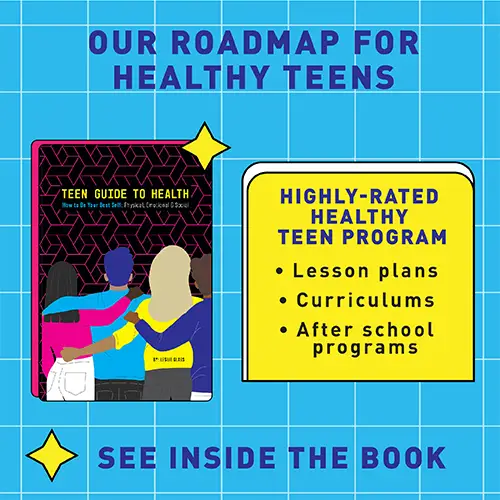Why Teen Pregnancy Risk Is More Important Than Ever Before
Teen pregnancy has always been a devastating problem for high school and college girls. No teen wants to be at risk for an unwanted pregnancy. Now that many State laws prevent abortion and even contraception, girls are at risk more than ever before. How can we help our girls? We can help our girls by creating a better awareness of how drinking and substance use changes their behavior. Girls get drunk after only one drink and are not able to resist what they would not do sober.
Did you know that girls process alcohol at twice the rate of boys? It’s true. That means one drink for a boy equals two for a girl. Do the math. Girls get drunk quicker and stay drunk longer than boys. Do the Alcohol Math For Girls.
Substance use increases teen pregnancy risk, and most teen pregnancies are unplanned (HHS). Unwanted pregnancies are especially likely if the teen(s) are intoxicated which results in more risky behaviors such as impulsive sex or even being date-raped when not being able to give permission for sex or having sex when consent is unknown.
This increases the risk of other problems including “pregnancy-related complications, premature delivery, and delivering babies with developmental problems.” Also, pre-and postnatal health problems for both mother and child are compounded when the mother uses alcohol or drugs and “pregnant teens are more likely to engage in binge drinking and drug use early in their pregnancies” (SAMHSA).
But does alcohol use in teens lead to unwanted pregnancies? Yes – according to the National Campaign to Prevent Teen and Unwanted Pregnancy. They found that:
Risk Factors For Teen Pregnancy
- Not having open communication with parents and other adult supports about sex
- Not talking to the potential partner about sex, pregnancy, and birth control
- Not understanding sexual activities and thinking you cannot get pregnant for various reasons such as being on your period, having sex for the first time, or using the ‘withdrawal method’ for birth control
- Engaging in early-age sexual activity (i.e., becoming sexual active at ages such as 11-15) – early puberty increases the odds of early pregnancy especially if combined with the use of substances
- Using alcohol (and/or other drugs) and being intoxicated prior to and during sexual activity
- Substance use influences risky sexual behavior as well as difficulties in saying no or being date raped
- Substance use also influences the lack of birth control use
Other potential consequences (for mother and child): SAMHSA, American Academy of Pediatrics, HHS, and NCPTUP:
- Higher chance of stillbirth or miscarriage or other pregnancy-related problems such as premature birth
- Ongoing substance use after pregnancy
- Poor neo-natal care
- Higher rate of birth problems such as fetal alcohol syndrome or fetal alcohol effects
- Developmental issues for the child including physical and behavioral problems
- Higher rate of having more unwanted pregnancies
- Higher risk for STDs and HIV.
- Higher risk of sexual assault due to intoxication
- Higher risk of medical problems for both mother and child
- Increased risk of homelessness
- Reduced educational pursuits for mothers
- Reduced income for mothers/poverty
- Increased use of alcohol and drugs in early pregnancy
- Increased need for substance use disorder treatment
- Repeated unwanted pregnancies
- Increased foster care of the child
- Increased delinquency and incarceration of the child
Teen Pregnancy Prevention Tools
- Honest and open communications between parents and teens
- Early education regarding teen pregnancy – exploring all risky behaviors and resulting consequences
- Early education and support groups around substance use disorders and treatment if needed
- Sexual abstinence-based information AND discussion of contraceptions
- Input from community agencies such as Planned Parenthood, physicians, nurses, the school nurse, or health clinics regarding risky behaviors and condom use to prevent STDs, HIV, and pregnancy
- Parents can talk with their teens about sex, saying ‘no’, risky behaviors, and birth control through open and honest discussion
- Parents knowing where their children are and what they are doing, including computer monitoring
- Educating teens about potential perpetrators and date rape and being open to talk with parents or others about concerns
Teen Pregnancy: Healthy Pregnancies
- Education and early intervention for pregnant moms and fathers to help with decisions about the pregnancy
- Learn ways to keep the mother and baby healthy while in utero and after birth
- Provide educational options and help for the mother to continue her education in some manner (alternative schools, home-schooling, on-line schools, etc)
- Help with health needs such as through medical clinics, Planned Parenthood, Dulas, etc.
- Help with housing including governmental housing if needed
- Find teen support group parents support group
- Provide counseling as needed to deal with the stress of the pregnancy and any other issues of the parents including relationship counseling
In summary, as a teen, there are more chances of unwanted pregnancy and this number increases when the young person(s) are drinking alcohol. Help your teen to be aware of high risk behaviors and ways to live a healthy life.





















